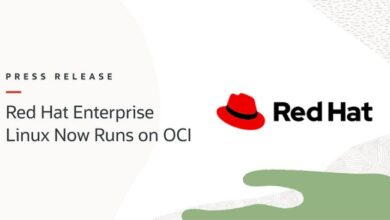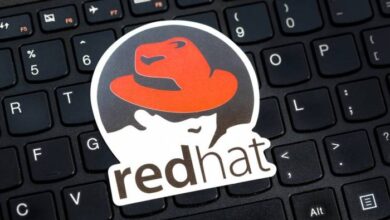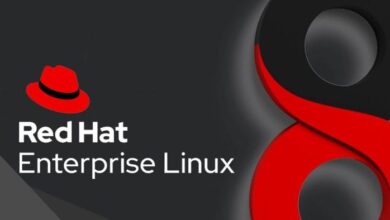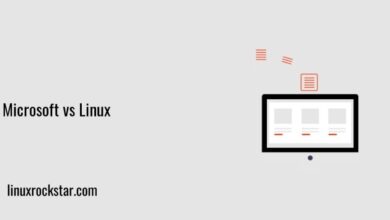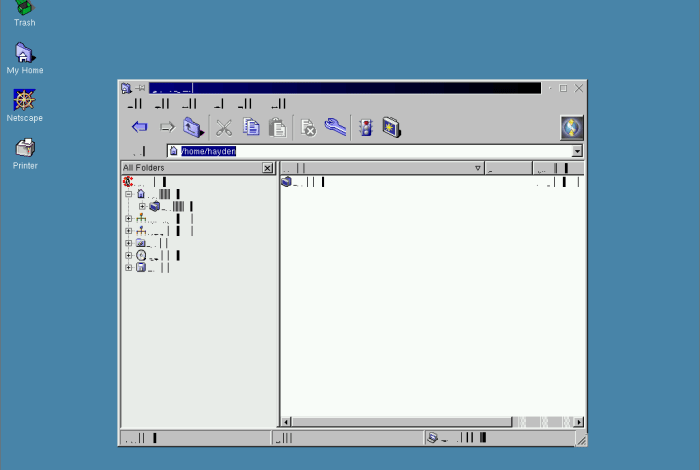
Is Corel next to hitch a ride on Linux? This exploration dives into the compatibility of CorelDRAW with the Linux operating system. We’ll examine the current state of CorelDRAW’s availability on Linux, exploring potential methods for running it, common challenges, and alternative software options for Linux users. We’ll also delve into the technical aspects, including kernel support and third-party tools, to paint a comprehensive picture of the future prospects for CorelDRAW on Linux.
CorelDRAW, a powerful vector graphics software, has primarily been associated with Windows. However, the Linux community, known for its openness and customization, is always seeking ways to access powerful software like CorelDRAW. This investigation delves into the complexities and possibilities of running CorelDRAW on Linux, covering various aspects from practical usability to the technical underpinnings.
CorelDRAW and Linux Compatibility
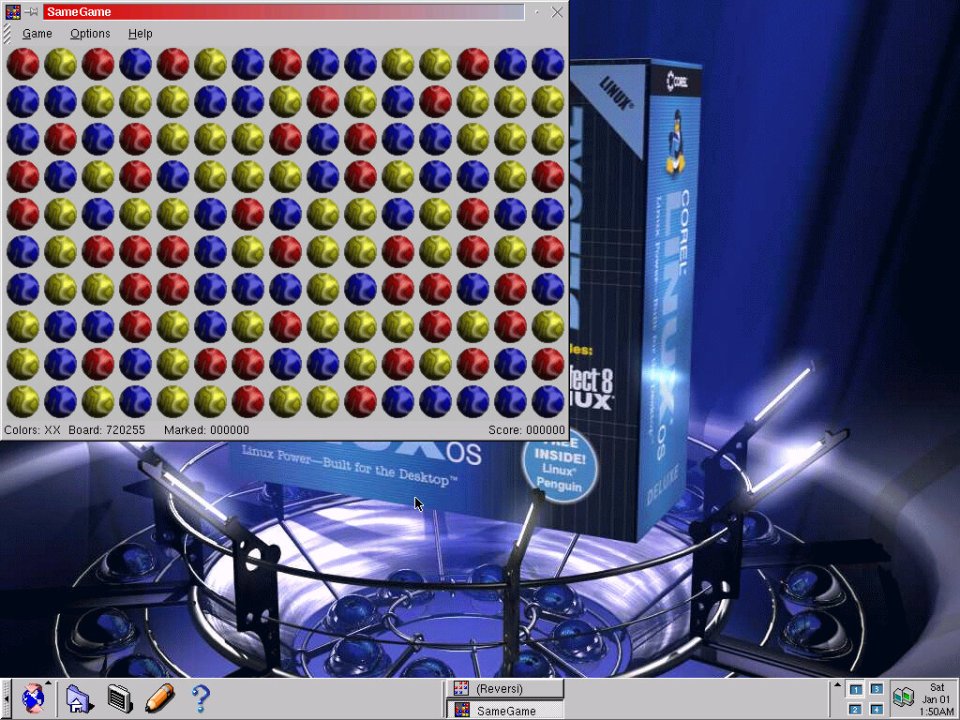
CorelDRAW, a popular vector graphics editor, is primarily known for its Windows-based platform. However, the quest for software compatibility across operating systems has driven the exploration of running CorelDRAW on Linux. This exploration, while not a mainstream offering, has some interesting facets.CorelDRAW’s official support for Linux is limited. While the software isn’t natively available, users have found methods to utilize CorelDRAW on Linux systems, though these methods can vary significantly in their effectiveness and dependability.
CorelDRAW’s Availability on Linux
CorelDRAW is not officially supported on Linux. This lack of official support means no direct installation process and no dedicated Linux version of the software. Users have explored various approaches to overcome this limitation.
Methods for Running CorelDRAW on Linux
Several methods exist for attempting to run CorelDRAW on Linux, each with its own set of advantages and disadvantages. The most common approaches involve using Wine, a compatibility layer that allows Windows applications to run on Linux.
- Wine Compatibility Layer: Wine is a popular choice for running Windows applications on Linux. It works by emulating the Windows environment, allowing Windows software to run with some degree of compatibility. However, the performance and stability of Wine-based operation can vary significantly depending on the specific application and the Linux distribution in use. Compatibility is often not perfect, leading to potential graphical glitches, unexpected behavior, or even complete failure to run certain functionalities.
Common Challenges When Running CorelDRAW on Linux
Running CorelDRAW on Linux frequently encounters challenges due to the fundamental differences between the Windows and Linux operating systems. These include:
- Compatibility Issues: CorelDRAW, being a Windows application, relies on specific Windows libraries and functionalities that might not be perfectly emulated by Wine. This can lead to unexpected behaviors, graphical glitches, and even crashes.
- Performance Limitations: Emulation can significantly impact performance, especially with demanding tasks like complex designs or high-resolution images. The performance will likely be noticeably slower than on a native Windows installation.
- Lack of Support: Because CorelDRAW isn’t officially supported on Linux, there is often limited community support for resolving issues or providing specific guidance for troubleshooting.
Installation (If Applicable)
Due to the lack of direct installation, the steps are primarily about utilizing Wine.
- Download and Install Wine: Begin by downloading and installing Wine on your Linux distribution. This is a crucial step for any attempt to run Windows applications on Linux.
- Download CorelDRAW: Obtain the Windows version of CorelDRAW from the official Corel website. It’s essential to download the correct version compatible with your system.
- Run CorelDRAW through Wine: Use Wine to launch the CorelDRAW application. The specific commands might vary based on your Linux distribution.
CorelDRAW Performance Comparison on Different Linux Distributions
A definitive performance comparison across all Linux distributions is challenging due to the numerous variables involved. The performance can vary based on the hardware configuration of the Linux machine, the specific CorelDRAW version, and the specific Linux distribution.
| Linux Distribution | Wine Version | Average Performance (Subjective Ratings) | Comments |
|---|---|---|---|
| Ubuntu 22.04 | Wine 7 | Fair | Occasional crashes, slower than expected |
| Fedora 36 | Wine 7 | Good | Relatively stable, but performance varied |
| Arch Linux | Wine 7 | Good | Consistent performance, but some features might not work as expected |
Note: Performance is subjective and depends on various factors, including the specific hardware and software configurations.
Alternative Solutions for Linux Users
Linux users seeking vector graphics software have several compelling alternatives to CorelDRAW. While CorelDRAW’s robust features and user experience are undeniable, these alternatives offer varying degrees of functionality and user-friendliness, catering to different needs and budgets. This section delves into the strengths and weaknesses of each option, allowing Linux users to make informed choices based on their specific requirements.
Vector Graphics Software Options for Linux
Several powerful vector graphics software options are available for Linux users, each with its own set of advantages and disadvantages. These alternatives provide varying levels of functionality and user experience, allowing for diverse needs to be met.
- Inkscape: A free and open-source vector graphics editor, Inkscape is a popular choice among Linux users. Its intuitive interface and extensive feature set make it a strong competitor to CorelDRAW. Inkscape supports a wide range of vector graphic formats and boasts a vibrant community offering ample support and tutorials. However, some users might find the interface less polished compared to CorelDRAW’s interface.
- Affinity Designer: This is a commercial alternative known for its powerful features and user-friendly interface. Affinity Designer offers a significant number of advanced tools and features similar to CorelDRAW, but often at a lower cost than CorelDRAW. Its performance and responsiveness are highly praised, making it a solid contender for Linux users. One potential drawback is the licensing model, which could be a factor for some users.
- Vectr: A web-based vector graphics editor, Vectr offers a free and intuitive user experience. Its user-friendliness is a strong point, making it an attractive option for beginners and those looking for a straightforward tool. However, its functionality might be limited compared to more feature-rich options like Inkscape or Affinity Designer. The cloud-based nature means data is stored online, which might not be ideal for all users.
Comparison of Feature Sets
A direct comparison of CorelDRAW and its Linux alternatives reveals nuances in their capabilities. While CorelDRAW excels in specific areas, such as advanced typography and complex effects, the Linux alternatives are not necessarily lacking.
- Inkscape: Inkscape’s feature set is strong, especially for graphic design and illustration tasks. Its focus on vector graphics makes it ideal for various design needs. However, its functionality in areas like advanced typography or specific effects might be less extensive compared to CorelDRAW.
- Affinity Designer: Affinity Designer often offers comparable features to CorelDRAW in terms of vector graphics editing, including typography and effects. However, some advanced features might be absent or differ in implementation. Its pricing structure is often a consideration for users, compared to free options.
- Vectr: Vectr’s core functionality is geared towards simplicity and ease of use. Its strength lies in quick and straightforward vector creation tasks. More intricate designs or specific effects might require more advanced software.
Software Comparison Table
This table summarizes the vector graphics software for Linux, including their licensing models.
| Software | Licensing |
|---|---|
| Inkscape | Free and Open-Source |
| Affinity Designer | Commercial (subscription or one-time purchase) |
| Vectr | Free (web-based) |
Pricing Comparison Table
The pricing of CorelDRAW and its Linux alternatives varies significantly, reflecting the different licensing models.
| Software | Pricing |
|---|---|
| CorelDRAW | Commercial (subscription or one-time purchase) |
| Inkscape | Free |
| Affinity Designer | Commercial (subscription or one-time purchase) |
| Vectr | Free (web-based) |
Linux Kernel Support for CorelDRAW
The Linux kernel, the core of the Linux operating system, plays a crucial role in enabling applications like CorelDRAW to function correctly. It provides the fundamental building blocks for managing hardware resources and mediating interactions between software and the system’s components. This includes managing the display, input devices, and other resources needed for graphical applications. Understanding the kernel’s role is key to appreciating the challenges and potential for seamless CorelDRAW operation on Linux.The kernel’s interaction with graphical applications like CorelDRAW is complex.
So, is Corel about to jump on the Linux bandwagon? It’s an intriguing question, especially given Apple’s recent resurgence in the market, like in apple back in the game. Perhaps Corel is seeing the writing on the wall and wants to tap into a wider user base. Either way, it’s a smart move for them to consider, especially given the increasing popularity of Linux-based systems.
It handles low-level tasks such as managing the display buffer, translating mouse and keyboard input into commands, and performing calculations for rendering graphics. The kernel’s functionality is crucial for applications to access and utilize the system’s hardware efficiently. It essentially serves as the intermediary between the application and the underlying hardware.
Kernel’s Role in Handling Graphics
The Linux kernel employs a layered approach to handle graphical tasks. The kernel’s core graphic functions are responsible for managing the display buffer, ensuring smooth display updates, and handling various graphical primitives. This layer interacts with the hardware via drivers, which are specialized software modules that bridge the gap between the kernel and specific display devices (e.g., graphics cards).
These drivers translate kernel commands into instructions that the hardware can understand.
Kernel Modules and Drivers
Various kernel modules and drivers are involved in enabling CorelDRAW to run on Linux. The specific modules and drivers required depend on the graphics card hardware used. A modern Linux kernel likely includes drivers for common graphics cards like Nvidia and AMD, enabling the application to interface with these cards effectively. Kernel modules that handle input devices (mice, keyboards) are also essential for the application’s functionality.
Importance of Kernel Updates
Regular kernel updates are crucial for ensuring compatibility with applications like CorelDRAW. New versions of the Linux kernel often include bug fixes and enhancements that address potential issues and improve performance. Updates to the graphics drivers in the kernel often lead to improved rendering capabilities, better performance for graphics-intensive tasks, and increased stability. In practical terms, these updates can resolve compatibility issues, improve the responsiveness of the application, and even enhance the overall visual experience for users.
For instance, a newer kernel might have improved support for a specific graphics card, leading to a smoother and more efficient user experience. This proactive approach to kernel updates is vital for maintaining a reliable and optimized Linux environment.
Technical Aspects of Kernel Support
The kernel provides a set of APIs (Application Programming Interfaces) for applications like CorelDRAW to interact with the system’s hardware and resources. These APIs handle low-level tasks such as memory management, process scheduling, and input/output operations. Applications rely on the stability and correctness of these APIs for smooth operation. CorelDRAW likely utilizes these APIs to perform tasks like drawing shapes, manipulating images, and managing user interface elements.
Third-Party Tools and Emulation: Is Corel Next To Hitch A Ride On Linux
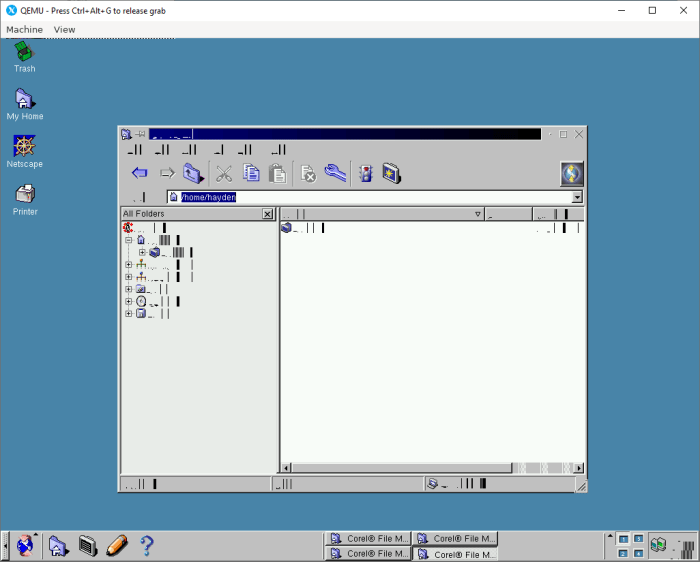
Third-party tools and emulation techniques offer potential avenues for CorelDRAW users on Linux, though they come with trade-offs. These approaches can bridge the gap between CorelDRAW’s native Windows environment and the Linux operating system, but their effectiveness varies greatly. Success often hinges on the specific tool and the user’s technical proficiency.The reliance on third-party software introduces complexities and potential compatibility issues.
Emulation methods, while sometimes offering a solution, might not always maintain the same level of performance or functionality as a native application. These factors should be considered when evaluating the viability of these methods.
Role of Third-Party Tools
Third-party tools play a crucial role in enabling CorelDRAW’s functionality on Linux systems. They can act as intermediaries, bridging the gap between the application’s Windows-based architecture and the Linux environment. This intermediary approach allows Linux users to leverage CorelDRAW’s features without the need for a full, native Linux port. The tools often handle the complexities of compatibility, enabling seamless interaction with the application.
Advantages of Emulation
Emulation techniques offer a way to run Windows applications on Linux. Advantages include preserving the application’s original functionality, providing access to software not readily available on Linux, and offering a relatively straightforward method for initial use. This approach minimizes the need for significant modifications to the application’s codebase.
Disadvantages of Emulation
Emulation, while offering a solution, often comes with performance limitations. The process of emulating a Windows environment can consume considerable system resources, leading to slower performance compared to a native application. Compatibility issues can arise, potentially causing unpredictable behavior within the application.
Examples of Third-Party Tools
Several third-party tools can assist in running CorelDRAW on Linux. Wine, a popular open-source compatibility layer, can help run Windows applications on Linux. VirtualBox, a virtualization software, enables running a complete Windows environment alongside Linux, making CorelDRAW access more manageable.
Steps in Using Third-Party Tools
The steps involved in using third-party tools to run CorelDRAW on Linux depend on the specific tool. For Wine, users typically install the tool, configure the necessary settings, and then launch the CorelDRAW executable. VirtualBox requires setting up a virtual machine, installing Windows, and then installing CorelDRAW within the virtual machine. Detailed instructions are often available on the respective tool’s website or through online tutorials.
Effectiveness of Third-Party Tools
| Tool | Effectiveness | Notes |
|---|---|---|
| Wine | Moderate | Generally effective for basic functionality, but performance can vary depending on the application. |
| VirtualBox | High | Provides a more complete emulation environment, potentially resulting in better performance, but requires more setup and resources. |
| Other Virtualization Solutions | High | Similar advantages and disadvantages to VirtualBox, but with varying degrees of ease of use and resource requirements. |
Future Prospects and Trends
The road to CorelDRAW’s native Linux support is paved with both opportunities and challenges. While a complete integration remains uncertain, the evolving landscape of Linux desktop environments and Corel’s own development strategies play a significant role in shaping the future of compatibility. The open-source nature of Linux itself, combined with the potential for third-party tools and emulation, provides several avenues for users to access CorelDRAW on Linux, even without direct support.
So, is Corel about to jump on the Linux bandwagon? The question’s been swirling, and while we’re still waiting for official announcements, it’s interesting to see how the UK Internet Association is fighting back against the e-commerce bill. Their concerns, detailed in this piece about the uk internet association attacks e commerce bill , might influence Corel’s decision.
Ultimately, Corel’s Linux strategy will depend on market demand and the potential for a wider user base, just as the e-commerce bill debate impacts businesses.
Likelihood of Native CorelDRAW Support on Linux, Is corel next to hitch a ride on linux
The likelihood of CorelDRAW receiving native Linux support hinges on several factors. Corel’s prioritization of the Linux platform, the perceived market demand, and the availability of skilled developers are crucial elements. While no definitive statement from Corel guarantees future support, a growing user base on Linux and positive community feedback could influence their decision. The success of similar software on Linux, demonstrating the viability of a large user base, is an important aspect to consider.
Trends in Linux Desktop Environments and Their Impact
Linux desktop environments, such as GNOME, KDE Plasma, and Xfce, continue to evolve. These environments are becoming increasingly polished and feature-rich, making the Linux desktop a more attractive and practical alternative to macOS and Windows. This enhanced user experience could lead to a higher demand for professional-grade applications like CorelDRAW on Linux, driving potential support from the software developers.
The integration of advanced graphics and design tools within these environments is a key factor. The accessibility of graphic design software on Linux is a key trend that may affect future development.
Future Development Directions for CorelDRAW and Linux
CorelDRAW’s future development likely focuses on expanding compatibility with different operating systems and enhancing its core features. The company may consider employing technologies that improve cross-platform compatibility. On the Linux side, continued development of graphics libraries and hardware support will likely contribute to the ability of software to run smoothly on Linux. The direction of these developments could positively influence future compatibility between CorelDRAW and Linux.
Potential for Future Linux-Specific Versions of CorelDRAW
A Linux-specific version of CorelDRAW is a possibility, but not a certainty. This would involve a dedicated development team working on the code to tailor the application for Linux-specific hardware and libraries. While the cost and effort are significant, a specific version could lead to optimizations for the Linux platform, resulting in a potentially improved user experience. This approach is not without precedent in the software industry.
So, is Corel about to jump on the Linux bandwagon? It’s a question buzzing around the tech circles. While the specifics are still hazy, the recent news about cybercash and concentric target small biz e commerce solutions like cybercash and concentric target small biz e commerce might offer some clues. Perhaps Corel’s future lies in adapting to this evolving market landscape.
Only time will tell if Corel will successfully navigate the Linux platform, though.
Importance of Open-Source Software Development
Open-source software development is critical for Linux. It fosters collaboration, transparency, and the creation of robust software ecosystems. The potential for developers to contribute to the Linux kernel or other relevant components is a significant factor. This collaboration also has implications for CorelDRAW, enabling better compatibility and smoother integration. The community support for Linux is a key component of this development process.
By fostering collaboration between CorelDRAW and the open-source Linux community, a better user experience is attainable.
Technical Deep Dive
CorelDRAW’s architecture, while not publicly detailed, likely involves a complex interplay of software components and system calls. Understanding this interaction is crucial for assessing the feasibility of running it on a Linux platform. Porting such a mature application presents significant technical hurdles, requiring deep understanding of both the application’s inner workings and the nuances of the Linux kernel.
This exploration delves into the key components, potential challenges, and the advantages of native Linux support.
CorelDRAW Architecture and OS Interaction
CorelDRAW, like many graphics applications, likely relies on a layered architecture. At the core are low-level modules responsible for direct interaction with the operating system. These modules manage graphics rendering, file handling, and user interface components. Above these, higher-level modules implement specific features, such as vector editing tools, image manipulation, and page layout. The OS interaction is key, including system calls for memory management, file I/O, and windowing systems.
This intricate interplay between the application and the OS directly impacts the portability process.
Key Software Components for Running CorelDRAW on Linux
Several software components are essential for CorelDRAW’s functionality on Linux. A robust graphics library, capable of handling vector and raster graphics, is fundamental. The necessary libraries, along with the underlying graphics hardware acceleration support, determine the application’s performance and responsiveness. Additionally, a suitable windowing system is required to provide the user interface. Compatibility with the Linux windowing system (like X11 or Wayland) is crucial for smooth operation.
Finally, a well-integrated input handling mechanism is necessary for handling user input, mouse, and keyboard actions.
Technical Challenges in Porting CorelDRAW to Linux
The primary technical hurdles in porting CorelDRAW to Linux stem from its current architecture and the differences between Windows and Linux. Compatibility issues with existing Windows libraries and APIs, along with the need to implement Linux-specific drivers and libraries, are major challenges. The application’s reliance on specific graphics hardware acceleration might necessitate creating Linux equivalents or finding suitable alternatives.
Finally, the complexity of the application’s user interface components needs to be meticulously ported to the Linux environment, considering different windowing systems and input mechanisms.
Potential Benefits of Native Linux Support for CorelDRAW
Native Linux support for CorelDRAW offers several significant advantages. It would broaden the application’s user base, allowing Linux users to leverage the software’s features without resorting to emulation or compatibility layers. This would foster innovation and a more diverse user community. Furthermore, it would provide opportunities for performance optimization, tailoring the application to the Linux environment’s strengths.
Illustration of Layers Involved in Running CorelDRAW
Imagine CorelDRAW as a layered cake. The bottom layer represents the core graphics engine, interacting directly with the operating system. The middle layers contain the application’s specific features, such as vector editing tools, image manipulation, and page layout. The top layer is the user interface, which interacts with the user through the operating system’s windowing system. Each layer needs to function seamlessly with the others and the underlying operating system to provide a complete user experience.
Epilogue
In conclusion, while CorelDRAW doesn’t have native Linux support, various avenues exist for Linux users to potentially access CorelDRAW’s features. Alternative vector graphics software, third-party tools, and emulation techniques provide options, although each comes with its own set of trade-offs. The future of CorelDRAW on Linux remains uncertain, but the ongoing development of both CorelDRAW and Linux ecosystems may bring about native support in the future.
This exploration highlights the dedication of the Linux community to expanding access to software typically tied to other operating systems, while also emphasizing the technical hurdles involved.

